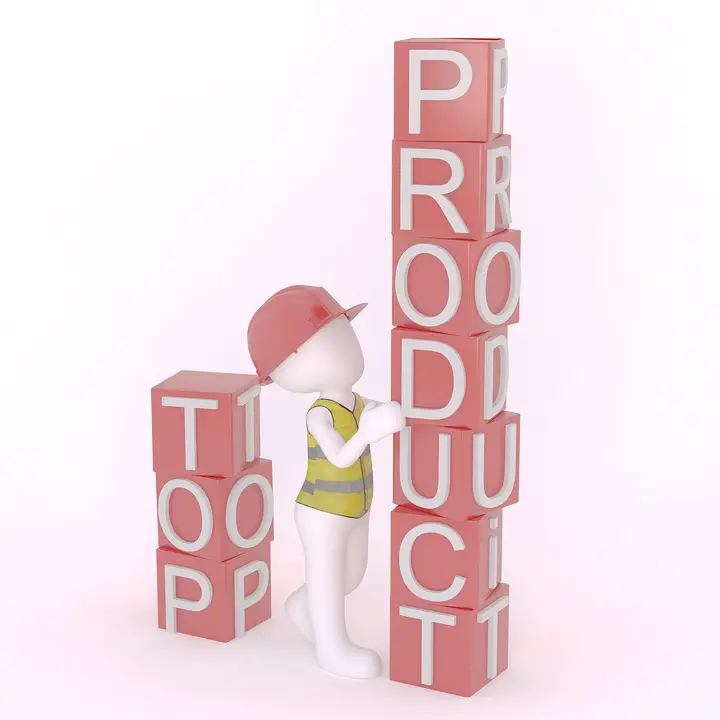Let’s get one thing straight: if you’re here looking for a gentle nudge into the world of online entrepreneurship, you might want to grab a seat and buckle up. We’re diving into a battle of the titans—digital products versus physical goods. Which one offers the best value? Spoiler alert: If you think this is going to be a boring, dry comparison, you’re in for a wild ride. Grab a cup of coffee, or whatever fuels your hustle, and let’s get into it!
The Showdown: Digital Products vs. Physical Goods
Before we jump into the nitty-gritty, let’s set the stage. We have digital products—the sleek, nimble warriors of the online world—versus the physical goods—the sturdy, traditional knights of the marketplace. Each has its pros and cons, but which one is going to help you line your pockets faster?
What Are Digital Products, Anyway?
Digital products are basically the cool kids at the party. They’re intangible and can be anything from e-books and online courses to software and stock photos. You know, all the things you can sell without ever needing to leave your couch.
Examples of Digital Products:
- E-books
- Online courses
- Membership sites
- Software and apps
- Digital art and graphics
Physical Goods: The Tried-and-True Classics
Physical goods are the bread and butter of traditional commerce. They’re the stuff you can hold in your hands—like that questionable-looking ceramic cat statue your aunt gave you. Whether it’s gadgets, clothing, or artisanal soaps, physical goods are everywhere.
Examples of Physical Goods:
- Clothing and accessories
- Electronics
- Home goods
- Food and beverages
- Handmade crafts
The Value Proposition: What’s in It for You?
Now that we’ve established the contenders, let’s dig into the meat of the matter. What’s really at stake here? We’re talking about value, people. And not just the kind of value that makes your mom proud; we want the kind that puts money in your bank account.
1. Cost of Production
Digital Products: Here’s the kicker—once you create a digital product, the cost of reproducing it is virtually zero. E-books can be sold thousands of times without any additional production cost. Talk about scalability!
Physical Goods: On the flip side, physical products come with a whole host of expenses. You’ve got materials, manufacturing, storage, and shipping costs. Not to mention that pesky inventory management. If you find yourself sitting on a mountain of unsold yoga mats, you’ve got a real problem on your hands.
2. Time to Market
Digital Products: Creating a digital product can be quicker than you can say “I should’ve started this last year.” Whether you’re whipping up a quick e-book or launching an online course, you can often get it to market in a matter of days or weeks.
Physical Goods: If you’re creating a physical product from scratch, you’re looking at a longer timeline. There’s design, production time, shipping, and all kinds of logistics that can turn your dream into a months-long saga.
3. Profit Margins
Digital Products: The profit margins on digital products are chef’s kiss—often reaching 80-90%. That’s right; for every dollar you make, you’re keeping most of it. It’s like finding a $20 bill in your winter coat pocket!
Physical Goods: Profit margins here can vary wildly. If you’re selling handmade soap, you may have a decent margin, but once you factor in the cost of goods sold (COGS), shipping, and returns, you might find yourself wishing you had a digital product instead.
4. Market Demand
Digital Products: The digital marketplace is constantly evolving, and trends can change in the blink of an eye. But the good news? You can pivot quickly. If your online course isn’t selling, you can tweak it in real-time.
Physical Goods: The demand for physical products can be more stable, but it’s also subject to fads. Remember that time everyone lost their minds over fidget spinners? If you missed that boat, you’re left holding some overpriced plastic.
5. Passive Income Potential
Digital Products: This is where digital products really shine. Once they’re out there, they can generate income while you sleep. Imagine waking up to “cha-ching” notifications with zero effort on your part!
Physical Goods: Sure, you can sell physical goods and make money, but you’re often tied to your inventory. Unless you’ve got a killer dropshipping setup, your earning potential is directly tied to how much time you spend managing that physical stock.
The Fun Factor: Which One Is More Enjoyable?
Now, let’s get real for a second. If you’re going to pour your heart and soul into something, it better be enjoyable, right?
Digital Products: Creating digital products allows for immense creativity. You can write an e-book on a whim, create an online course about that weird hobby of yours, or design graphics that will make people say, “Wow, I need this in my life!” Plus, you can do it all in your pajamas.
Physical Goods: Making physical products can be fun, too—especially if you love crafting or building things. But if you find yourself knee-deep in bubble wrap and shipping labels, you might start wishing for the simplicity of a digital product.
The Verdict: What’s the Bottom Line?
So, which one truly offers the best value? Drumroll, please…
If you’re looking for scalability, low overhead, and passive income potential, digital products are the clear winners. They require less initial investment, offer higher profit margins, and can be created and sold quickly.
However, if you have a passion for crafting or have a unique physical product idea, there’s still a place for physical goods in the marketplace. Just be prepared for the hustle and grind that comes with it.
Actionable Steps: How to Dive In
-
Identify Your Niche: Whether you’re leaning toward digital or physical, find a niche that excites you. If you’re not passionate about it, you’re going to burn out faster than a candle in a windstorm.
-
Create Your Product: For digital, start writing that e-book or filming that course. For physical, source your materials and start crafting. Just don’t forget to wear protective gear if you’re working with power tools!
-
Market Like a Boss: Use social media, SEO strategies, and email marketing to get the word out. Digital products are great for using affiliate marketing, so consider partnering with influencers who align with your brand.
-
Analyze and Adjust: Keep an eye on your sales data. If something isn’t working, don’t be afraid to pivot. This is your empire; make it work for you.
- Scale: Once you’ve got a winning product, think about how you can expand your offerings. For digital, consider creating related products or services. For physical goods, think about upselling or diversifying your product line.
Final Thoughts
Whether you decide to dive into the world of digital products or take the plunge with physical goods, remember: the best value is the one that aligns with your skills, passions, and financial goals. So what are you waiting for? Get out there and start hustling, because the online world is your oyster, and it’s time to cash in!
Ready to take action? Let’s make it rain! 💸






